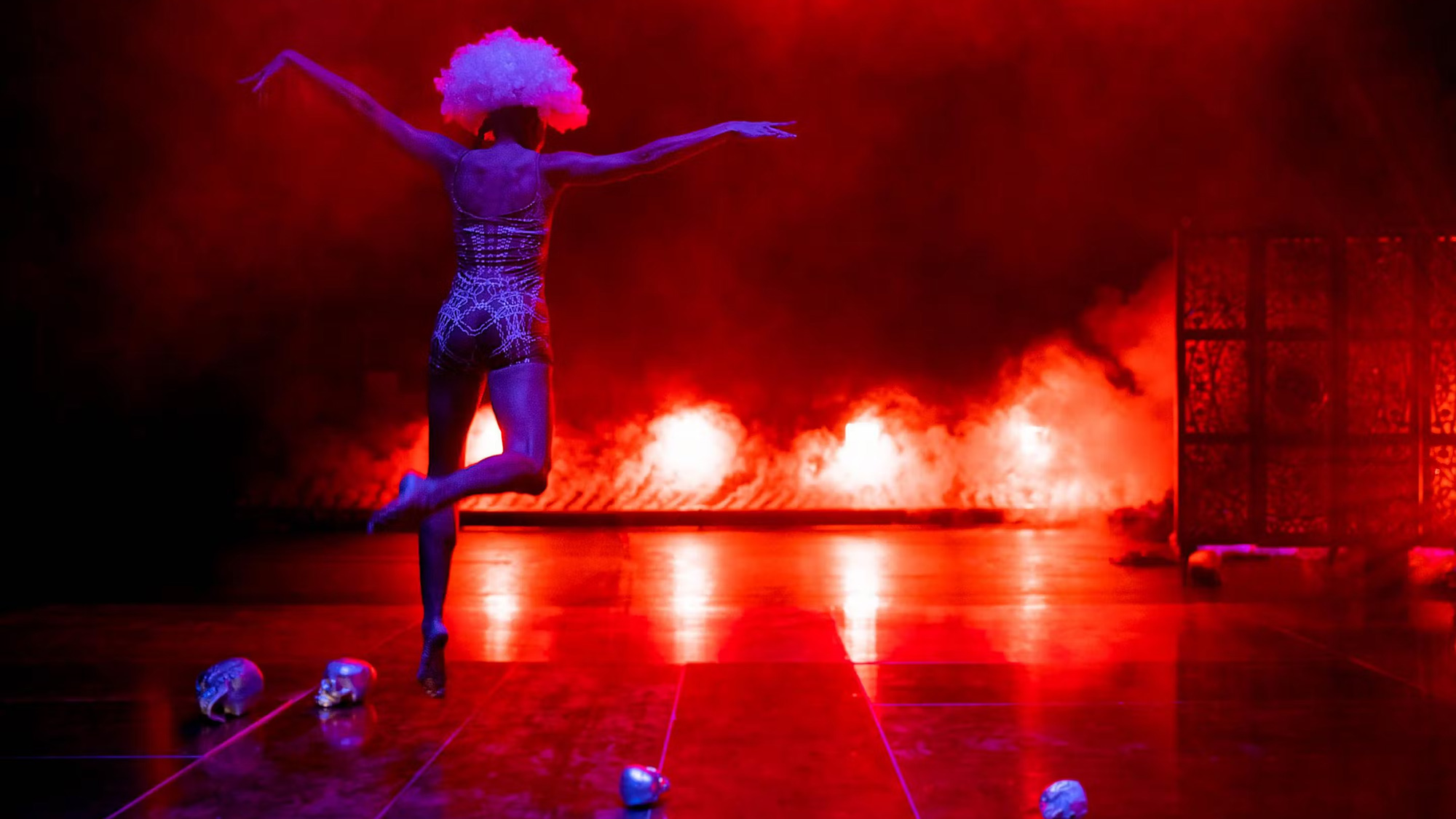Choreographer to tell Dominican Republic story in EMPAC performance
Ligia Lewis’s dance/theater work A Plot/A Scandal is inspired in part by her great-grandmother, Lolón Zapata, a practitioner of the sacred Dominican dance form called Palo. Because practicing Palo was dangerous in the Dominican Republic, which was controlled at that time by the anti-Black Trujillo dictatorship, Zapata would do the rituals secretly at night, as a form of resistance.
But you won’t see Palo performed in A Plot/A Scandal, which is onstage Friday and Saturday at EMPAC—nor will Lewis ever bring Palo to an American audience.
“I could never use a Western stage to stage Palo—at no point should this be transparently shared to an audience,” the Dominican-born artist, director, choreographer and dancer said in a recent interview. “At the center of the piece is a critique about the impossibility of me fully knowing Palo myself or sharing it, as someone raised in the U.S. with an artistic practice shaped by Euro-American traditions. I stage myself and my politics and find different forms of resistance in my own body.”
Lewis describes A Plot/A Scandal as “an experimental dance/theater work that interrogates history.” Her film that departs from the stage work has just been selected for the 2024 Whitney Biennial—an exhibition of contemporary American art at the Whitney Museum of American Art in New York City. It’s informed by her wide-ranging research into themes related to colonialism and rebellion between the 16th and 19th centuries, spanning people and events including the English philosopher John Locke, the slave revolt of Santo Domingo in 1521 and the Cuban artist and revolutionary José Antonio Aponte. Lewis and her sister, Sarah Lewis-Cappellari, who served as the dramaturg for the piece, even created a bibliography so audiences could continue engaging with the themes and historical figures the work investigates.
“I looked at my great-grandmother as a figure of resistance, doing something considered scandalous, and as a way of centering Black womanhood in practice, and then mapped the work outward historically,” Lewis said. “The way the images unfold inside the piece are my form of resistance.”
In addition to choreographing and directing A Plot/A Scandal, Lewis also wrote the text, created the set design and is the principal performer. At the core of the work, she said, is the question of property and its relationship to land and identity—specifically how Locke’s view of life, liberty and property “as central tenets of how we understand who we are denies enslavement and erases an entire people that are fundamental to the Western world.”
“I used the idea of ‘plot’ as having multiple meanings—plotting as scheming, a plot as a piece of land, and plot being a story, so I arrive at the story of my great-grandmother by tracing my feet across a copper-colored floor,” she said. “The weightedness of my feet and how they move across the floor, the materiality of the body, the objects, the scenographic elements are all very much entangled.” Those elements include dramatic lighting, video projections, narrative and a series of costumes that Lewis dons as the piece moves through different time periods.
A Plot/A Scandal debuted in 2022 in Berlin, Germany, where Lewis is based. She made the decision to settle in Europe early in her professional life, drawn by a performance approach that merges dance and theater rather than drawing hard lines between the forms. That sensibility, she noted, may explain why her work has been shown extensively in European performance venues, but primarily in visual art spaces in the U.S., including MOCA and the Hammer Museum in Los Angeles, the Walker Art Center in Minneapolis, the Museum of Contemporary Art in Chicago—and now the Whitney Biennial in New York.
A Plot/A Scandal adds another layer to Lewis’s body of work, which includes the Bessie Award–winning minor matter, from 2017, a physically and emotionally intense trio exploring the Black experience. Still Not Still from 2021, looked at the centuries-old exclusions of non-white people from the historical record, integrating a traditional musical lament known as the complainte. For deader than dead, first staged in 2020, Lewis used Macbeth’s “Tomorrow, and tomorrow, and tomorrow” soliloquy as a jumping-off point to explore recurring cycles within both history and performance.
As different as the pieces are, there is a clear throughline, Lewis says. “What’s fundamental to all of my work is this question of embodiment, racial embodiment, and how we come to know one another as people in space.”

